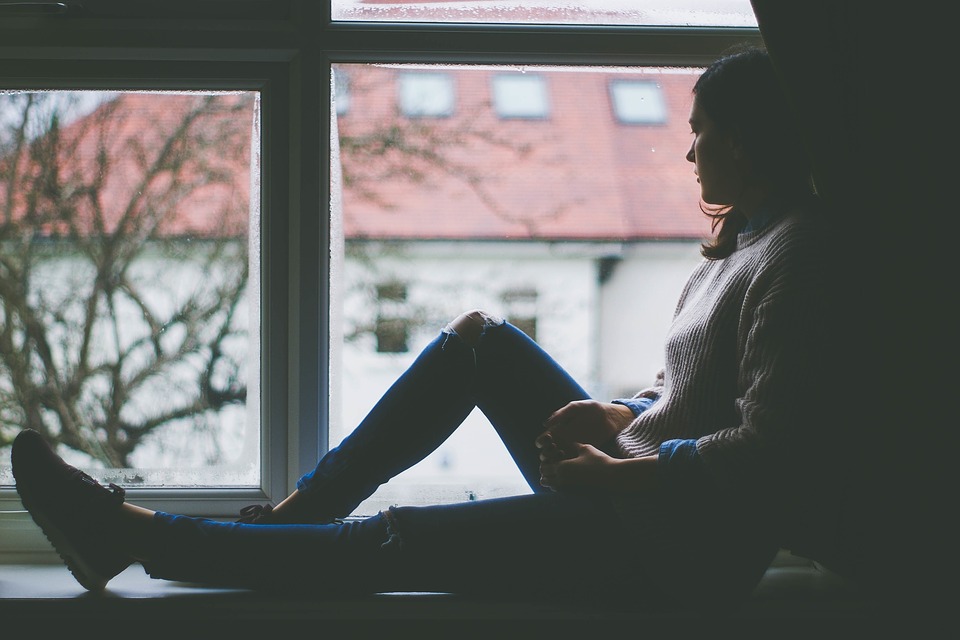
by Kim Hayes
For those living in countries situated in the northern hemisphere, the coming of winter heralds the festive season including Thanksgiving, Christmas, and New Year’s. It is a happy time for most of us, but some people begin to succumb to depression for no known reason.
One probable cause is seasonal affective disorder (SAD), an emotional response caused by the lack of exposure to daylight. SAD is common during the winter season when days are short and the nights are long. This reduced exposure to sunlight causes chemical changes in the brain that trigger SAD.

Recognizing the Onset of SAD
SAD can be self-diagnosed as the symptoms are easy to identify. For example, are your mood swings more aggravated during winter? Do you feel a deep sense of unexplained sadness? Do you experience a change in your sleeping patterns, such as sleeping for longer periods of time, or not being able to sleep? Do you seem to put on weight or lose weight during winter?
If you answered yes to any of these questions, you could be suffering from SAD. The symptoms of depression begin to manifest towards the end of the fall season and escalate as winter begins. Gradually, your mood takes a turn for the worst. This type of depression is not triggered by a traumatic incident, which gives psychiatrists a specific issue to pinpoint and tackle, but is unexplainable.
What is the Underlying Cause of SAD?
After years of studying SAD, doctors have proven evidence that the lack of sunlight is the main cause of SAD. In recent studies, doctors have found that a person’s genes, hormones, age, and physiological factors may also play a role in making a person more susceptible to developing SAD.
The production of melatonin happens during the night, and when the nights are long, our bodies produce an increased amount of melatonin, causing the onset of depression. In turn, depression interrupts our sleep and thus the production of serotonin – the brain chemical that affects our ability to feel pleasure – is whittled down.
Finding a Cure for SAD
Light Therapy
Light is an effective form of treatment for SAD. It is often referred to as phototherapy, which utilizes lamps to provide full spectrum lightning to replicate daylight. You will need to sit at a specific distance from a uniquely-designed fluorescent lamp box that boasts 10,000 lux. The treatment lasts 30 minutes.
As an alternative to phototherapy boxes, you can also purchase very bright fluorescent bulbs made to duplicate natural light. You need to use the brightest bulbs and expose yourself to this light twice a day, preferably in the morning and evening.
Keep Warm
Sunlight and warmth go hand in hand. In researching the need for additional light, doctors found that warmth also has a positive effect on combating SAD. It’s not necessary to turn up the heat in the entire home with costly energy. Just get cozy by bundling up in your warmest clothes and using a portable heater. A nice roaring fire is also a great way to keep warm by also adding additional light to your brightly lit home.
Clean Air for a Healthier You
Keeping the air clean and fresh in our homes is often overlooked. We often think of air pollution as being a component of outdoors; however, research has shown that our homes include large amounts of bacteria, dust, and dirt particles, which contain high positive ions. The higher the positive ions in the air, the more unhealthy the air becomes.
Staying indoors can increase your chance of contracting SAD, because you are breathing in this contaminated air that is trapped inside your home as you keep windows and doors shut tight from the cold of the outdoors.
Negative ionized air purifiers remove contaminants from the air, creating clean fresh air that is similar to natural clean outdoor air. Ionized air filters come in different sizes to meet a person’s needs and budget. Just one is all you need to keep your air in your home clean, as the ionized air filters are portable and can be moved easily from room to room.
Vitamin D
Lack of sunlight decreases the amount of Vitamin D that is found in our blood. Through blood tests done on people suffering from SAD, it was found that their bodies were deficient in Vitamin D. Taking a daily dose of Vitamin D can counter the symptoms of SAD as it alleviates fatigue and depression naturally. It can be taken as a dietary pill supplement, or through the food you eat, such as some warm hot chocolate made with fortified Vitamin D milk.
So get rid of your winter blues and embrace the holidays and winter season the way it was meant to be enjoyed. Engage in activities that make you happy. Take action and practice the benefits of light therapy, warmth, clean air, and adequate vitamin supplements to defeat SAD.
(Kim Hayes is a freelance writer and practitioner of natural health. She also researches about air quality and its effect on health. She believes that air filters should be used at home to improve indoor air quality and treat SAD. If you are confused about what air filters to buy, you can read about home air filter reviews for the best products available.)





I think another reason for SAD is lack of exercise in the winter. I certainly feel depressed if I don’t get my exercise. Since it is dark outside, we tend to stay bundled up at home during the winter and not get enough physical activity for the day.